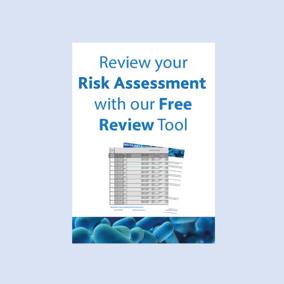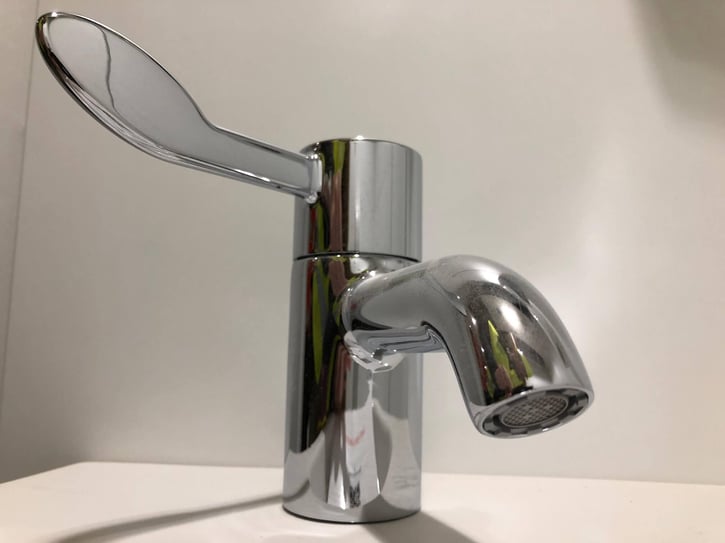In order to understand what temperature monitoring entails and how such planned preventative maintenance should be completed in accordance with guidance notes (HSG 274 Part 2 (table 2.1)), it would first of all be prudent to differentiate between the requirements of managing hot and cold water distribution systems.
Monitoring Cold Water Systems
Monitoring cold water systems requires the adequate identification of ‘sentinel points’ – defined as the ‘nearest’ and ‘farthest’ monitoring points; to/from cold water storage cisterns and on long pipework branches to provide assurances that cold water is <20°C and that this can be achieved within x2 minutes of opening an outlet.
The number of sentinel points identified for ‘monthly’ monitoring will typically be contingent upon the size and complexity of the managed estate and should be captured within the written scheme element of an organisational water safety plan (informed by Legionella risk assessments/schematics). Therefore, the larger the building and associated water distribution system, the greater the requirement for monitoring.
 It is crucially important that Legionella / water risk assessments and accompanying schematics are reviewed for accuracy and appended where necessary (following a material change to a building/water system for example), to ensure that the monitoring approach taken remains ‘proportionate to risk’, so it is advised to include the review of Legionella risk assessment/schematic gaps within the agenda for the water safety group meetings so that updates can be formally captured/actioned periodically. Moreover, such standing agenda items can also be captured within organisational terms of reference (ToR) in support of governance policy and statutory compliance.
It is crucially important that Legionella / water risk assessments and accompanying schematics are reviewed for accuracy and appended where necessary (following a material change to a building/water system for example), to ensure that the monitoring approach taken remains ‘proportionate to risk’, so it is advised to include the review of Legionella risk assessment/schematic gaps within the agenda for the water safety group meetings so that updates can be formally captured/actioned periodically. Moreover, such standing agenda items can also be captured within organisational terms of reference (ToR) in support of governance policy and statutory compliance.
This encourages an ‘organic’ approach to water hygiene management by helping to ensure that water risk systems are accurately captured (within updated risk assessment asset registers/schematics) and adequately maintained, thus mitigating the potential for over or under monitoring.
Remember: You Can Only Monitor/Maintain What You Know About.
It is also indicated to monitor a representative selection of other cold water outlets/points over a ‘defined time period’ to create a cold water temperature profile of the whole system and provide assurances that cold water (<20°C) can be achieved within x2 minutes of opening the outlet (as detailed above).
Monitoring Hot Water Systems
Monitoring hot water systems ‘initially’ requires differentiating between non-circulating and circulating water systems.
Non-circulating systems requires the identification of sentinel points (as per the rationale for cold water systems) to provide ‘monthly’ assurances that hot water (>50°C within non-health estates and >55°C within health estates) is achieved within x1 minute of opening a given outlet.
Circulating systems require the identification of monitoring points for return legs of principal loops (also considered sentinel points) to provide ‘monthly’ assurances that hot water (>50 within non-health estates and >55°C within health estates) is achieved within x1 minute of opening a given outlet.
Circulating systems also require the identification of monitoring points for return legs of subordinate loops to provide ‘quarterly’ assurances that hot water (>50 within non-health estates and >55°C within health estates) is achieved within x1 minute of opening a given outlet. Identifying and monitoring return legs from subordinate loops is crucially important to mitigate any ‘short circuits’ (potentially caused by inadequately balanced hot water systems or seized valves for example) that may represent a dead-leg within the water system.
Whilst a ‘linear interpretation’ of subordinate loops are systems that ‘T’ from principal loops, ‘accurately’ identifying subordinate loops within large complex estates with sprawling water systems may be more complicated and may necessitate a pipework survey (if not identified within the water / legionella risk assessment survey schematic) to assist with this. Such surveys are invaluable for not just identifying suitable monitoring points but also identifying other non-compliances such as inadequate valve placement and operation, oversized pipework etc., which may also be considered contributory factors to dead-legs forming within water systems.
It is therefore crucially important that where there are material changes to the estate (from reactive maintenance or strategic estates projects) these changes are reflected within water / legionella risk assessments and associated schematic reviews to provide assurances of control and maintain confidence in the planned preventative maintenance strategy.
Finally, circulating systems also require the identification of monitoring points for tertiary loops (and intermediate outlets within single pipe systems) which are considered additional ‘representative’ monitoring points that can be used to build a temperature profile of the whole system over a defined period.
Moreover, it is indicated that a representative selection of such outlets (~20% is typically accepted – dependent upon the size of the system and available resource) are monitored on a rotational basis (often monthly) so that these outlets are monitored at least ‘annually’ to evidence that ‘the whole system is reaching satisfactory temperatures for Legionella control’.
Feel free to reach out if you have any questions about this blog or if you would like to consult with one of our experts for further advice on water hygiene.
Editor’s Note: The information provided in this blog is correct at date of original publication – July 2021
© Water Hygiene Centre 2021









